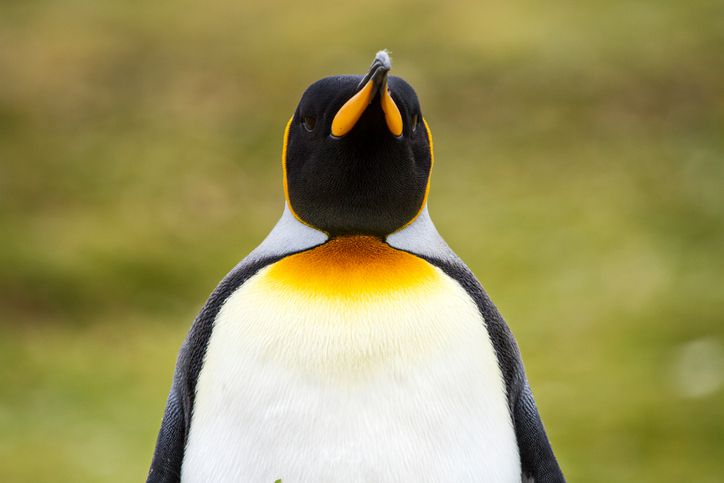If you’re searching for places to go Chile wildlife watching and spy this nation’s ample selection of birds and animals in their natural habitats, then look no further. From the extreme north to the far south of the country, we’ve examined every nook and cranny of Chile to bring you a guide to the best places for tracking down nature.
Chile wildlife watching locations in the northern regions of the country:
The Atacama Desert
Although the planet’s driest non-polar desert might not seem the most obvious place for wildlife watching, prepare to be surprised. Some parts of this 40,540 sq.-miles (105,000 km²) desert are too arid to support plant and animal life, but in others, hardy species have adapted to living in these extreme conditions.
 Animals you can expect to see:
Animals you can expect to see:
- Flamingos aren’t generally associated with the desert, but that doesn’t stop three species of flamingos, Andean, Chilean and James’s, from inhabiting the lakes of the Atacama salt flats and Los Flamencos National Reserve.
- The South American gray fox has also defied the odds by making the Atacama Desert its home, living on a diet of lizards, rodents, eggs and scorpions.
- Guanacos and vicuñas, wild species from the camelid family that also includes the domesticated llama and alpaca, survive in rare grassy areas.
- Viscachas, which look like a cross between a chinchilla and a rabbit, are more than at home in the dusty plains of the Atacama. Unfortunately, given the natural camouflage of their pale brown coats, you’ll be lucky if you can pick one out against the backdrop.
When to see wildlife in the Atacama Desert:
Although it’s possible to see flamingos in the Atacama Desert year-round, they are most prevalent during summer. For the other animals, a keen eye and getting away from human activity is the best way of encountering them.
Chile wildlife watching locations in the central regions of the country:
Río Los Cipreses National Reserve
Only 60-miles (100km) south of the capital, Río Los Cipreses National Reserve is a protected area teeming with wildlife.
 Animals you can expect to see:
Animals you can expect to see:
- The majestic condor – a symbol of the Andean mountains and the national bird of several South American countries – lives within the reserve. Places at higher altitude offer a better chance of seeing this huge bird soaring through the skies.
- Guanacos live in small herds on the slopes of the valley, grazing on patches of grassland.
- The burrowing parrot, a fascinating species that lives in great numbers along the coast of Argentina, also builds nests in the cliffs along the edge of the river. They are best seen in the early morning and evening.
When to see wildlife in Río Los Cipreses National Reserve:
The reserve is open throughout the year, although your chances of coming across burrowing parrots are increased in summer, as they migrate north for the winter.
Chiloé
Accessible by ferry from the mainland, the island of Chiloé is another prime destination for Chile wildlife watching.
Animals you can expect to see:
- Around ten years ago, scientists discovered that the waters around Chiloé housed unexpected visitors: blue whales. Hundreds of these huge mammals have since been recorded in the region.
- Humboldt and Magellanic penguins are also in abundance, with a penguin rookery containing both species located on the Islands of Puñihuil.
- Considered the rarest species of otters in the world, the Southern river otter can be seen in the Chepu Valley.
When to see wildlife around Chiloé:
The blue whale spends January through April in the waters around Chiloé, while penguins breed from September through March, making this a good time to visit the colonies.
Tierra del Fuego
The southernmost point of the continent, Tierra del Fuego is extreme in every way and while few humans are up to the challenge of living in the cold conditions at the “very ends of the earth”, many animals have learned to thrive here.
 Animals you can expect to see:
Animals you can expect to see:
- Magellanic penguins inhabit a series of islets in the Strait of Magellan, with their predator, the sea lion, living on other islands close by.
- The only colony of king penguins in the Americas is resident on the shores of Bahía Inútil (Useless Bay), in the Chilean portion of Tierra del Fuego.
- A new colony of near threatened black-browed albatrosses was discovered a few years ago in Admiralty Sound in Chilean Tierra del Fuego. It is believed to contain around 100 nests.
When to see wildlife in Tierra del Fuego:
King penguins live in their colony year-round, while Magellanic penguins and black-browed albatross are found in Tierra del Fuego between September and April.
No comments yet
There are no comments on this post yet.






Leave a comment